
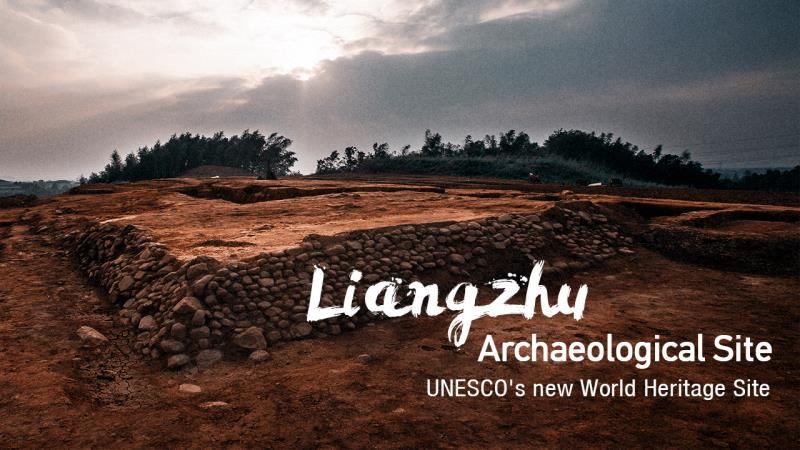
China's ancient Liangzhu Archaeological Site was declared a World Heritage site by UNESCO's World Heritage Committee during its 43rd session in Baku, the capital of Azerbaijan, on Saturday.
The site, located in Yuhang District of Hangzhou City, east China's Zhejiang Province, showcases the Chinese civilization of prehistoric rice agriculture that existed between 3300 B.C. and 2300 B.C.
Spanning about 14.34 square kilometers (1,434 hectares) on the plain of river networks at the north foot of southeast China's coastal hilly region, the site includes the archaeological remains and unearthed cultural relics of the Liangzhu Ancient City and an environment of wetland.
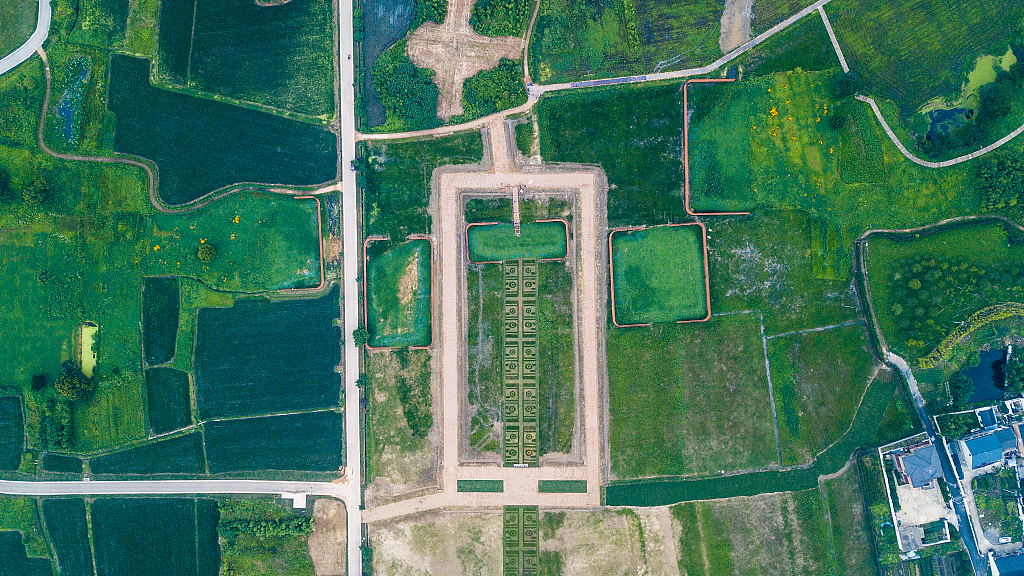
An aerial view of parts of the Liangzhu Archaeological Site in Yuhang District of Hangzhou City, east China's Zhejiang Province, July 5, 2019. /VCG Photo
The Archaeological Ruins of Liangzhu City provide profound and compelling evidence that Chinese civilization started 5,000 years ago, 1,000 years earlier than previously thought, according to Colin Renfrew, a retired professor of archaeology at the University of Cambridge and a fellow of the British Academy.
The World Heritage Committee added Liangzhu to the UNESCO list in order to encourage better protection and preservation of the site, which is considered to be of "outstanding universal value" to humanity.
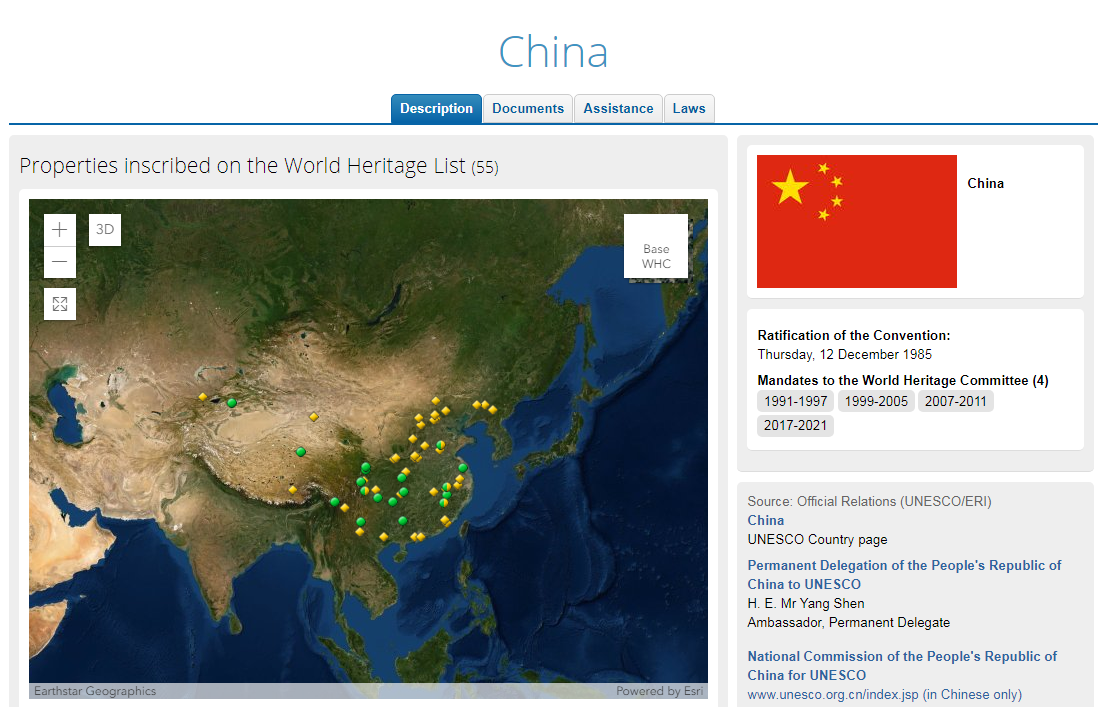
A screenshot of the page that shows there are a total of 55 properties across China inscribed on the World Heritage List on unesco.org.
With this new inscription, the World Heritage List now includes 55 properties – 37 cultural, 14 natural and four mixed items – across China, the highest in the world.
Among them are the recently added natural site, Migratory Bird Sanctuaries along the Coast of the Yellow Sea-Bohai Gulf (Phase I), and the last World Cultural Heritage Site, Kulangsu – a historic international settlement inscribed two years ago that covers an island in Xiamen in southeast China's Fujian Province.
Window to one of the world's oldest civilizations
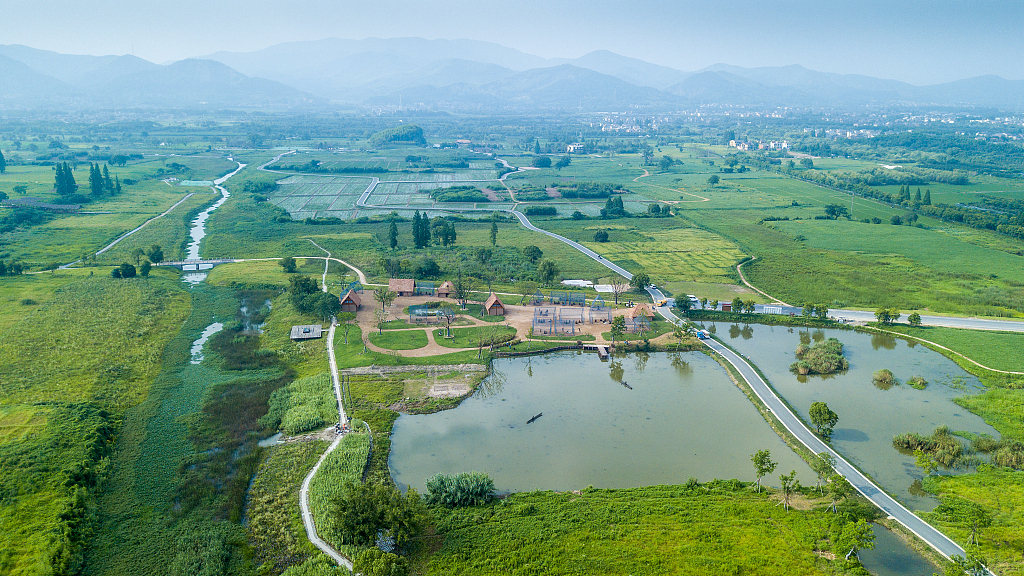
The Liangzhu Archaeological Site exhibits the "supreme achievements" of agricultural civilization in the Yellow River and the Yangtze River basins – going back some 5,000 years. /VCG Photo
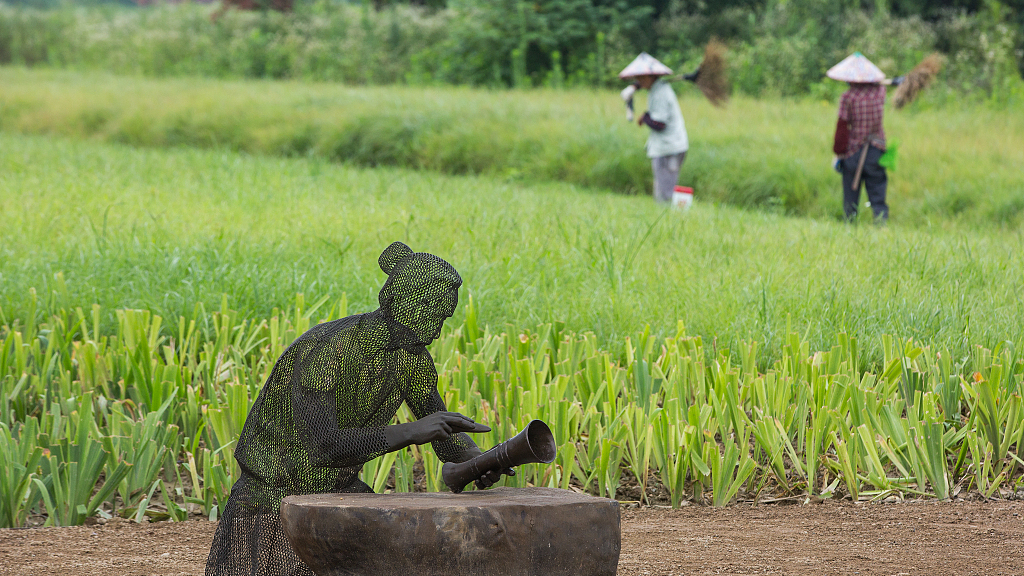
A view of the Liangzhu Archaeological Site in Yuhang District of Hangzhou City, east China's Zhejiang Province, July 5, 2019. /VCG Photo
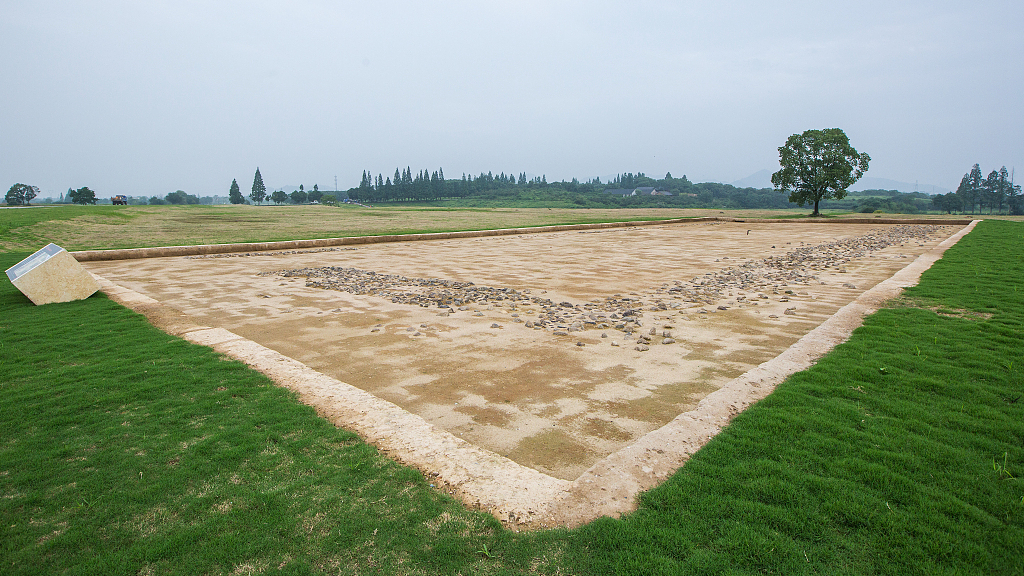
Parts of the historic remains are unearthed at the Liangzhu Archaeological Site in Yuhang District of Hangzhou City, east China's Zhejiang Province, July 5, 2019. /VCG Photo
As an example of Liangzhu culture (3300 BC – 2300 BC), the Liangzhu Archaeological Site is hailed as one of the most important heritage sites of the Neolithic Age in China and is thought to have served as a political, economic, cultural and religious center of China's last Neolithic jade culture.
It is surrounded by a buffer zone covering nearly 100 square kilometers (about 10,000 hectares) comprising of five heritage sites – Yaoshan, Tangshan, Xunshan, Huiguanshan and Yaojiadun.
Tremendous historic remains, such as city walls, foundations of large architecture, tombs, altars, residences, docks and workshops have been found inside and outside of the Liangzhu Ancient City.
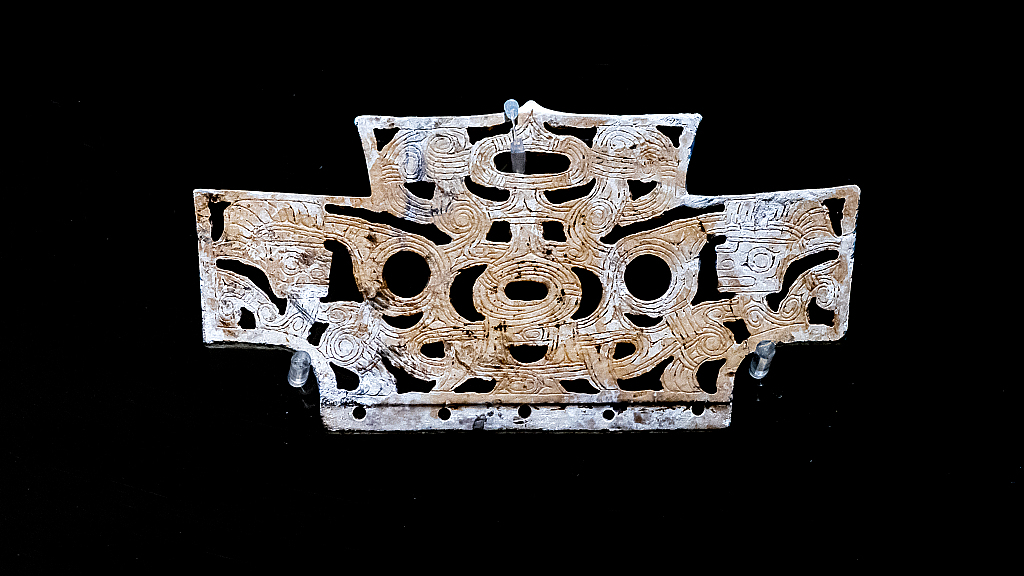
Part of a jade comb unearthed at the Liangzhu Archaeological Site. /VCG Photo
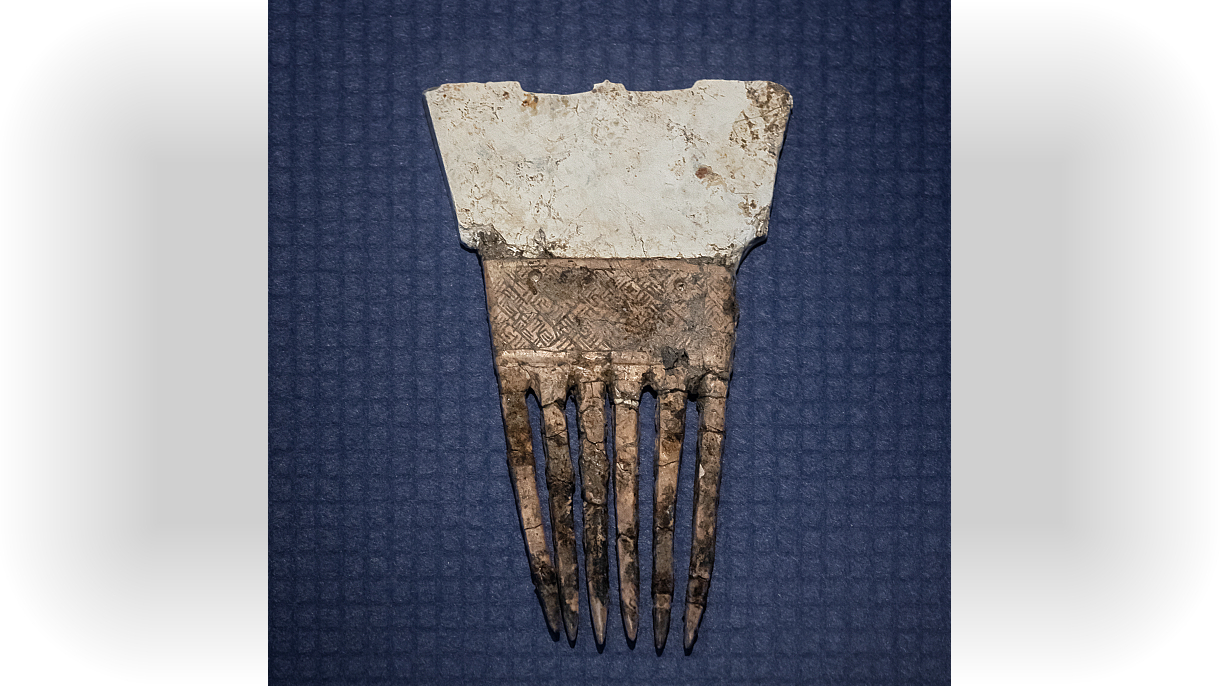
A jade comb unearthed at the Liangzhu Archaeological Site. /VCG Photo
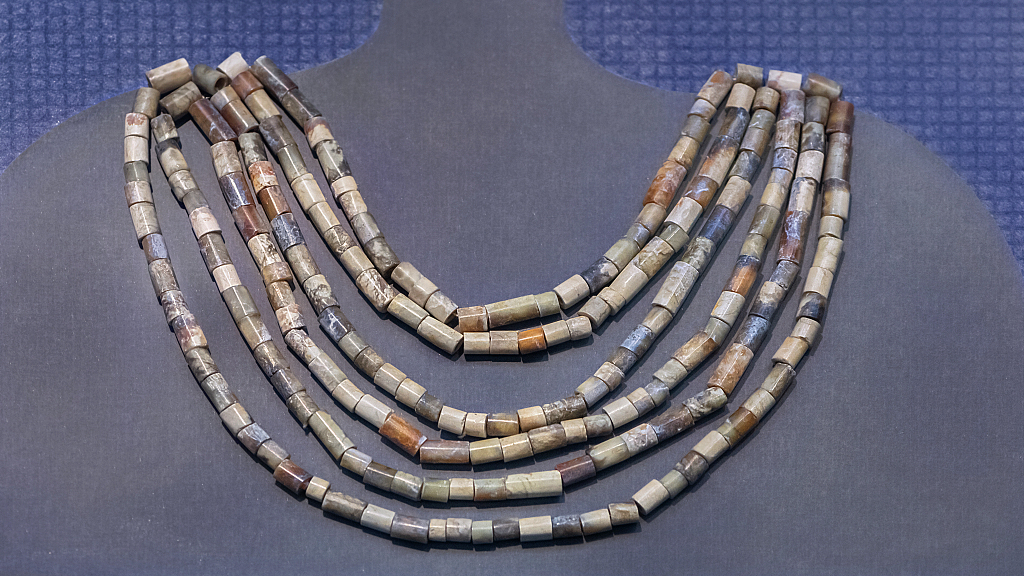
Jade necklaces unearthed at the Liangzhu Archaeological Site. /VCG Photo
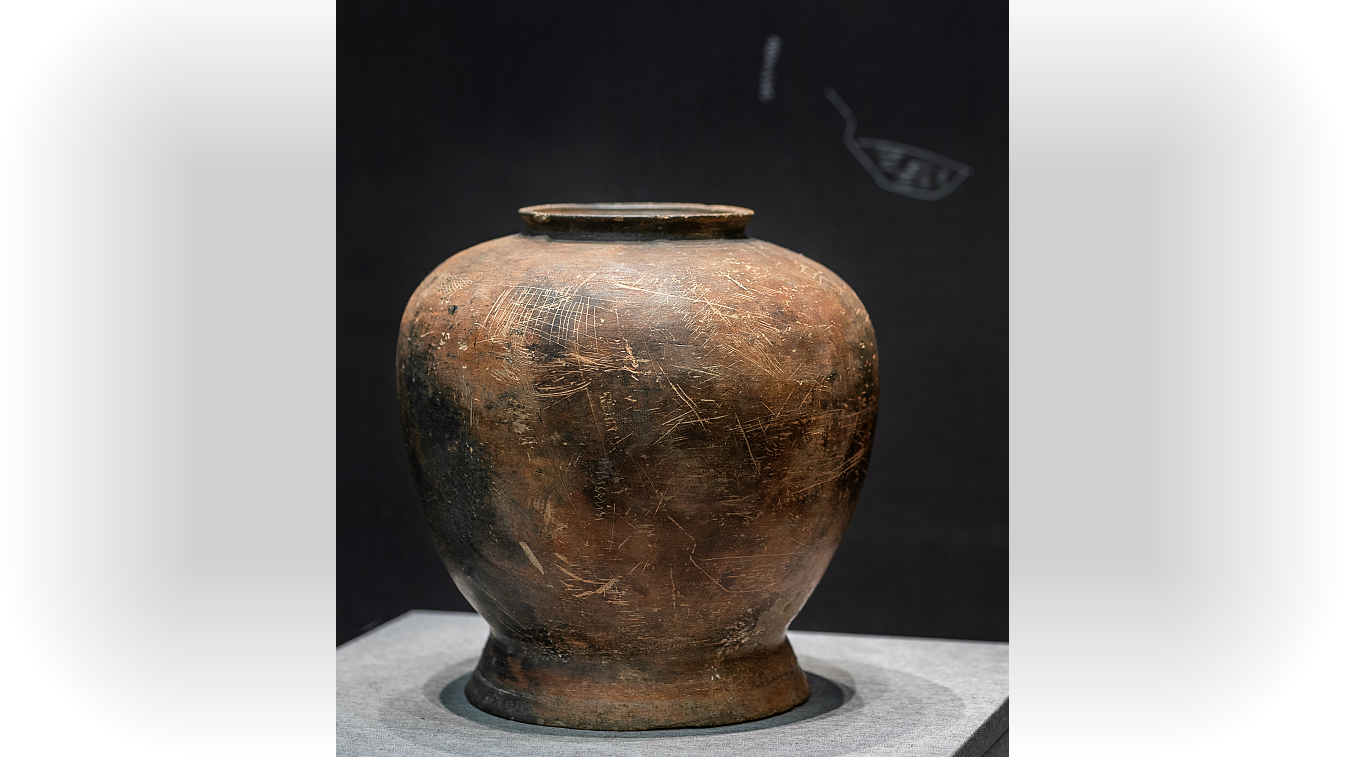
A pottery jar unearthed at the Liangzhu Archaeological Site. /VCG Photo
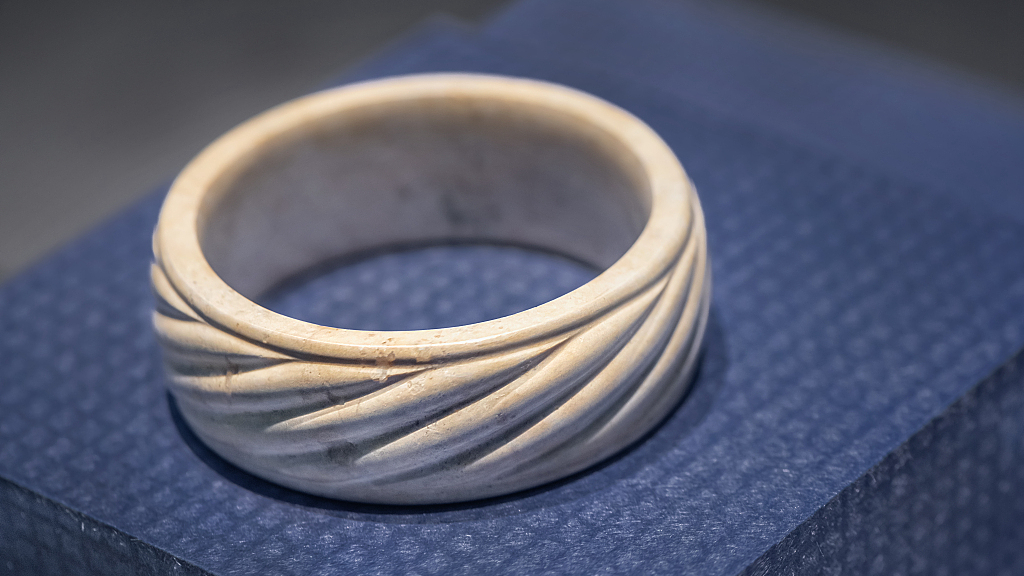
A jade bracelet unearthed at the Liangzhu Archaeological Site. /VCG Photo
Moreover, the discoveries of the city gates and waterway entrances linking the water network illustrate city planning and water conservation and harvesting infrastructure of the early period of Chinese civilization.
Equally exceptional are a large number of unearthed utensils used in manufacturing, household, military, and religious rituals.
Among them are exquisite jade wares with typical "deity and animal mask pattern" showing the peak of prehistoric jade-ware production and reflecting the ultimate level of jade carving in China in ancient times.
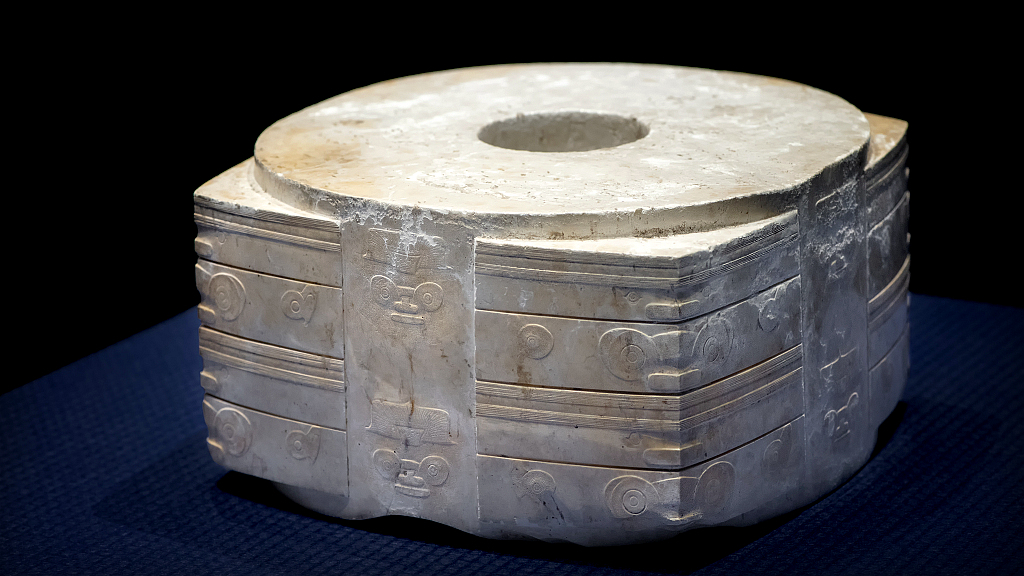
The Jade Cong, dubbed "Jade Cong King," weighs about 6,500 grams, wide and huge in size, and has a unique decoration pattern. /VCG Photo
The "Jade Cong King," a tubular vessel contained within a rectangular body, is widely considered the most representative cultural artifact as it showcases fine craftsmanship during the Liangzhu Culture period.
It is 8.8 centimeters in height and 17.6 centimeters in diameter, weighing 6,500 grams.
The site where the vestiges of religious and cultural artifacts were unearthed not only implies the existence of the largest ancient city of the late Neolithic Age in the lower reaches of the Yangtze River, but also exhibits the "supreme achievements" of agricultural civilization in the Yellow River and the Yangtze River basins – going back some 5,000 years.
Witness to generations of preservation efforts
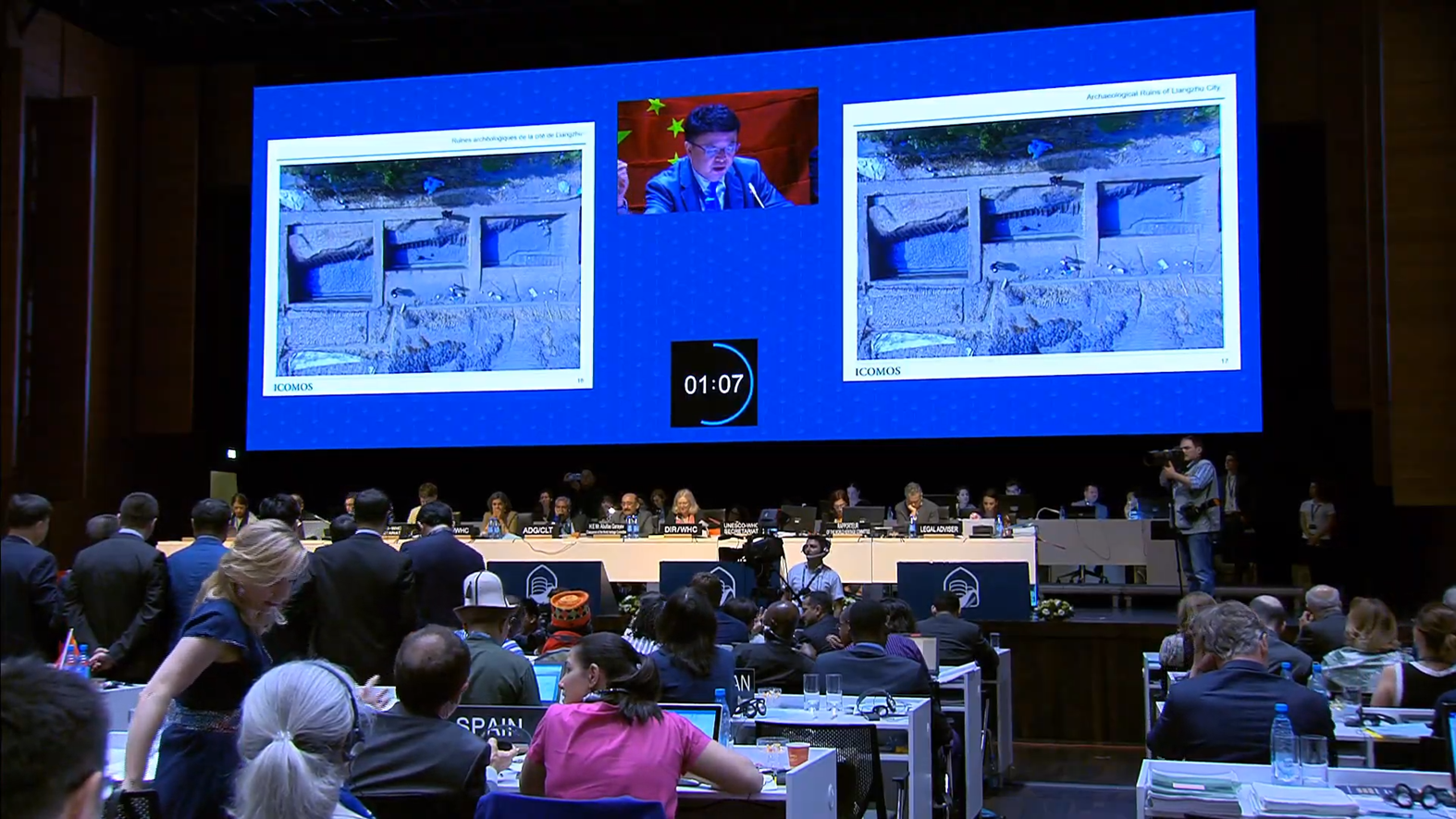
A Chinese delegate delivers a speech after the Liangzhu Archaeological Site is declared as a World Heritage site by UNESCO's World Heritage Committee during its 43rd session in Baku, the capital of Azerbaijan, July 6, 2019. /Photo via UNESCO Live
Since initial excavation started in 1936, generations of Chinese archaeologists and scholars have made great efforts to explore the Liangzhu Archaeological Site and protect its heritage.
Named after the site in 1959, Liangzhu culture was universally recognized for its far-reaching influence. More than small-scale 100 archaeological sites scattered around the site had been unearthed by the late 1980s.
In 2007, some wall base relics of the ancient city were discovered, which then were confirmed to be the vestiges of the Liangzhu Ancient City, unfolding a mysterious picture of a city that remained obscured for nearly 4,000 years.
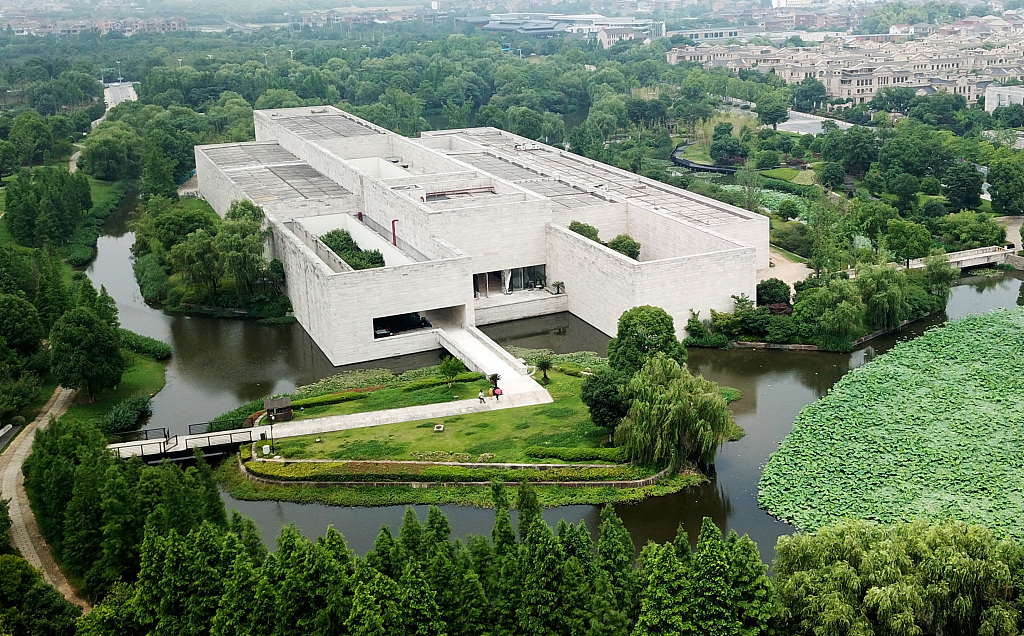
The Liangzhu Culture Museum is situated at the Liangzhu Archaeological Site in Hangzhou, east China's Zhejiang Province, June 25, 2018. /VCG Photo
One year later, the Liangzhu Culture Museum was established and opened to the public.
In 2013, China added the Liangzhu Archaeological Site to its Tentative List, preparing for the official nomination proposal to UNESCO.
Last year, the nomination of the property was submitted for evaluation to the World Heritage Center, which, earlier this year, put it on the shortlist for final selection at its annual meeting.
The committee's 43rd session continues until July 10.
Video edited by Zhao Yuxiang
Cover image designed by Zhang Xuecheng

Copyright © 2018 CGTN. Beijing ICP prepared NO.16065310-3
Copyright © 2018 CGTN. Beijing ICP prepared NO.16065310-3